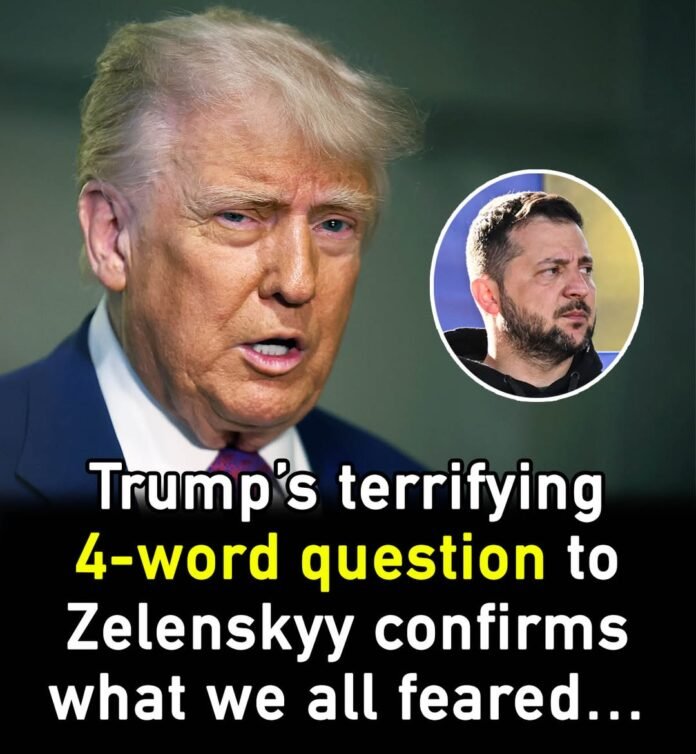In a move that’s left both critics and supporters surprised, former President Donald Trump has taken a dramatically tougher stance on Russia’s war in Ukraine — a far cry from his previous posture of distance and disinterest. Once a vocal skeptic of U.S. involvement in the conflict, Trump is now making headlines for asking Ukrainian President Volodymyr Zelenskyy whether Ukraine could strike inside Russia — specifically, Moscow and St. Petersburg — if given the weapons to do so.
For older Americans watching this war unfold from afar, the shift may feel jarring. After all, Trump has long championed an “America First” doctrine, openly questioning U.S. military and financial aid to Ukraine and criticizing NATO’s handling of the conflict. But now, as tensions in Eastern Europe escalate and the war drags on with no end in sight, the former president’s tone is changing — and changing fast.
A Complicated Relationship with Ukraine
Trump’s history with Ukraine has never been straightforward. During his 2024 presidential campaign, he repeatedly criticized U.S. involvement in the war, arguing that the billions of dollars in aid would be better spent at home.
Even in the early months of his return to office, Trump’s stance remained cold. He painted Ukraine not as the victim, but as the provocateur, stating that it was Ukraine — not Russia — that triggered the war. He also questioned the legitimacy of continuing military aid, sparking outrage from lawmakers across the political spectrum.
The icy relationship hit another low after a February White House meeting with Zelenskyy, where the Ukrainian president reportedly left with little assurance that further help would come. For many, that was the end of the conversation.
But over the past week, something has clearly changed.
A Sudden Shift in Strategy — and Tone
On Monday, Trump stunned the international community by threatening 100% “secondary tariffs” on countries that continue to do business with Russia if a peace deal isn’t reached within 50 days.
“We’re very, very unhappy with them,” Trump said, “and we’re going to be doing very severe tariffs… tariffs at about 100%. They call them secondary tariffs.”
He also voiced his disappointment with Russian President Vladimir Putin, calling out his refusal to come to the table to negotiate a ceasefire. Trump stated clearly: if there’s no deal by September, “we’re going to be doing secondary tariffs.”
For a man who once praised Putin’s strength and questioned Ukraine’s integrity, the new stance represents an about-face.
Trump Greenlights Billions in Military Equipment
Beyond economic threats, Trump also announced a new wave of military equipment shipments to Ukraine, though it’s structured in a politically clever way. Instead of directly sending U.S. taxpayer-funded weapons, Trump says the equipment will come from American defense manufacturers — but paid for by European allies and delivered through NATO.
This maneuver allows Trump to maintain his “America First” platform while still stepping up support for Ukraine, particularly in light of NATO’s rising urgency over the war’s regional threat.
The move, however, is just part of the story.
Behind Closed Doors: Did Trump Encourage Attacks on Moscow?
In a bombshell report from the Financial Times and later corroborated by The Washington Post, Trump is alleged to have asked Ukrainian President Zelenskyy if he could strike Moscow and St. Petersburg — if the U.S. provided long-range weapons.
According to anonymous sources familiar with a phone call between the two leaders on July 4, Trump asked:
“Volodymyr, can you hit Moscow? Can you hit St. Petersburg too?”
Zelenskyy reportedly responded:
“Absolutely. We can if you give us the weapons.”
The reported conversation also included Trump telling Zelenskyy that he had spoken to Putin the previous day — and that the exchange had been “bad.”
If true, the exchange signals a massive escalation in Trump’s willingness to confront Russia head-on, even encouraging Ukraine to take the fight directly to Russian soil. Such a move would mark a serious escalation in global tensions, and it places the United States — once again — at the center of a foreign war.
Trump’s Denial: “No, He Should Not Target Moscow”
Just days after the story broke, Trump denied the claim.
“No, he should not target Moscow,” Trump said on July 15, attempting to walk back the leaked conversation.
While the denial was clear, the damage — or clarity — was already done. The public was left to reconcile Trump’s past reluctance with his present aggression, and to wonder where, exactly, his Ukraine policy stands.
From “America First” to “Russia Must Feel Pain”
Perhaps the most revealing line in the Financial Times report was not a quote, but a description of Trump’s strategy: to “make them [the Russians] feel the pain.”
It’s a harsh phrase — one that signals Trump no longer sees diplomacy alone as a viable path. It also reveals how, despite public appearances, Trump may be recalibrating his stance on global leadership, shifting from isolationism to something more interventionist — if it serves his goals.
This new tone — more militant, more commanding — may be appealing to older voters who remember the Cold War era and who value strength and decisive action in foreign policy. But it also raises serious concerns about escalation and the U.S.’s long-term role in the conflict.
A New Chapter in an Old Conflict
Whether Trump’s shift is strategic, political, or personal remains unclear. What’s certain is that his stance on Ukraine and Russia is no longer passive. He’s speaking more boldly, threatening Russia more directly, and offering Zelenskyy more support — even if only behind closed doors.
And as the war in Ukraine grinds on, older Americans watching from home may feel a mix of déjà vu and anxiety. The stakes are rising. The rhetoric is heating up. And one of the world’s most polarizing leaders is once again at the center of it all.




